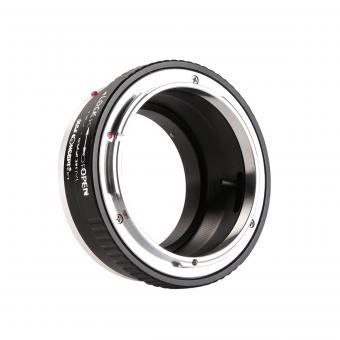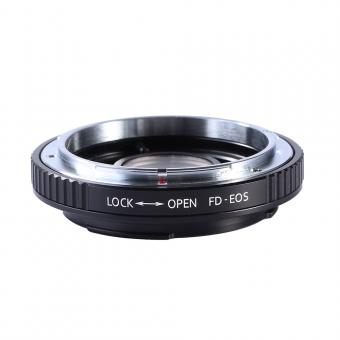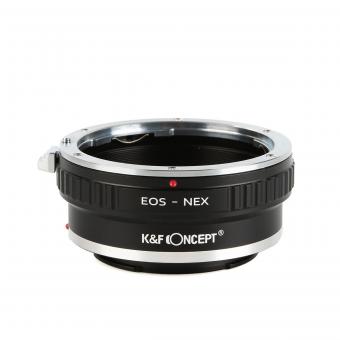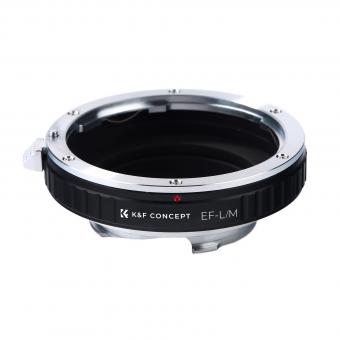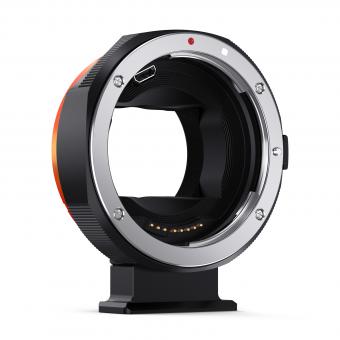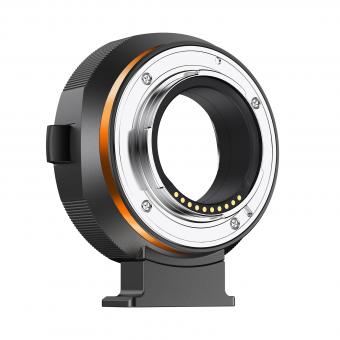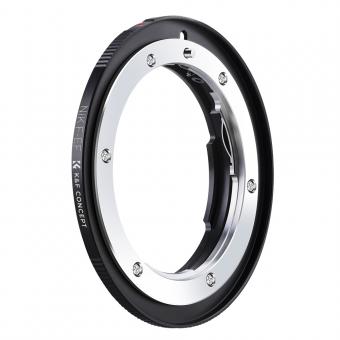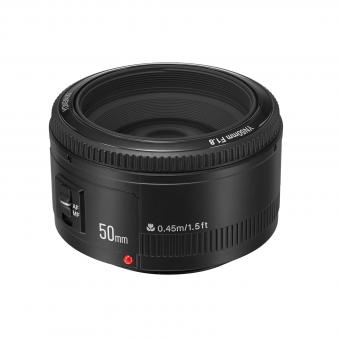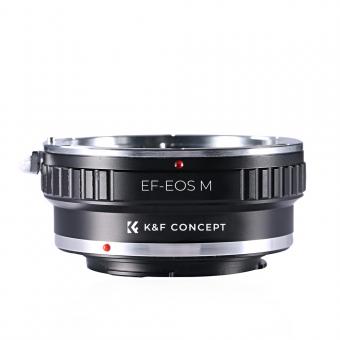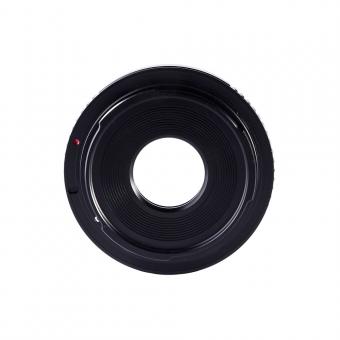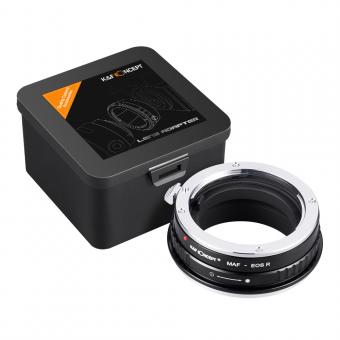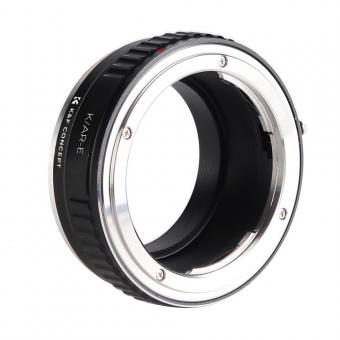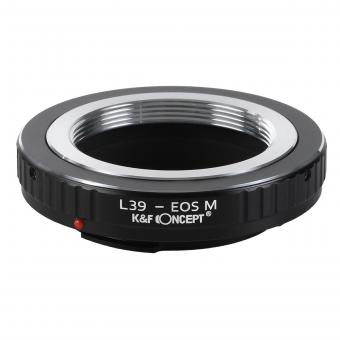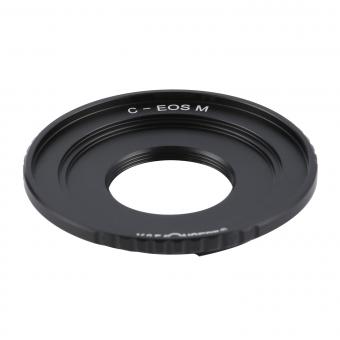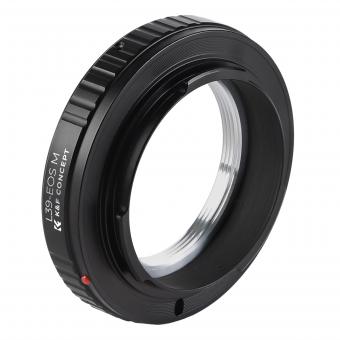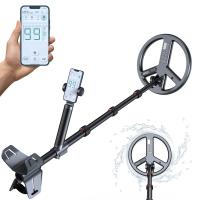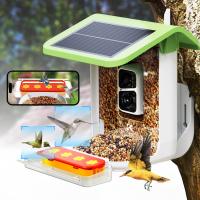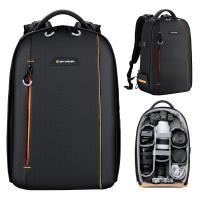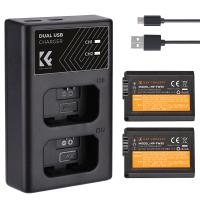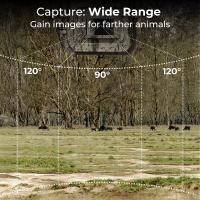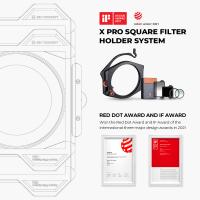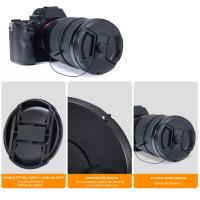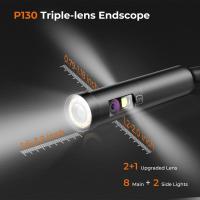How To Do Ef Mount To Efs Lens ?
To use an EF mount lens on a camera with an EF-S mount, you would need an EF to EF-S lens adapter. This adapter allows you to attach an EF lens to an EF-S camera body. The adapter essentially acts as a spacer, allowing the lens to be mounted properly on the camera. It does not affect the functionality or performance of the lens.
When using an EF to EF-S lens adapter, it is important to note that the camera's crop factor will still apply. EF-S lenses are designed specifically for APS-C sensor cameras, which have a smaller sensor size compared to full-frame cameras. Therefore, when using an EF lens on an EF-S camera, the effective focal length of the lens will be multiplied by the crop factor.
It is worth mentioning that not all EF lenses are compatible with EF-S cameras, as some lenses may protrude too far into the camera body and interfere with the mirror or other internal components. Therefore, it is recommended to check the compatibility of the specific lens and camera combination before using an adapter.
1、 Using an EF to EFS Lens Adapter for Canon Cameras
Using an EF to EFS lens adapter for Canon cameras is a simple and effective way to expand your lens options. This adapter allows you to use EF lenses on EFS mount cameras, providing greater versatility and compatibility.
To use an EF to EFS lens adapter, follow these steps:
1. Ensure that your camera is turned off before attaching the adapter. This will prevent any potential damage to the camera or lens.
2. Align the red dot on the adapter with the corresponding red dot on the camera's lens mount. This ensures proper alignment and secure attachment.
3. Gently twist the adapter clockwise until it locks into place. You should feel a slight click when it is securely attached.
4. Now, you can attach your EF lens to the adapter. Align the red dot on the lens with the red dot on the adapter and twist the lens clockwise until it locks into place.
5. Once the lens is attached, you can power on your camera and start shooting. The camera should recognize the lens and allow you to adjust settings accordingly.
It's important to note that while using an EF to EFS lens adapter expands your lens options, it may also have some limitations. For example, autofocus performance may be affected, especially with older EF lenses. Additionally, some features specific to EFS lenses, such as image stabilization, may not be fully functional.
Overall, using an EF to EFS lens adapter can be a cost-effective solution for photographers who want to utilize EF lenses on their EFS mount cameras. It allows for greater flexibility and opens up a wider range of lens choices.
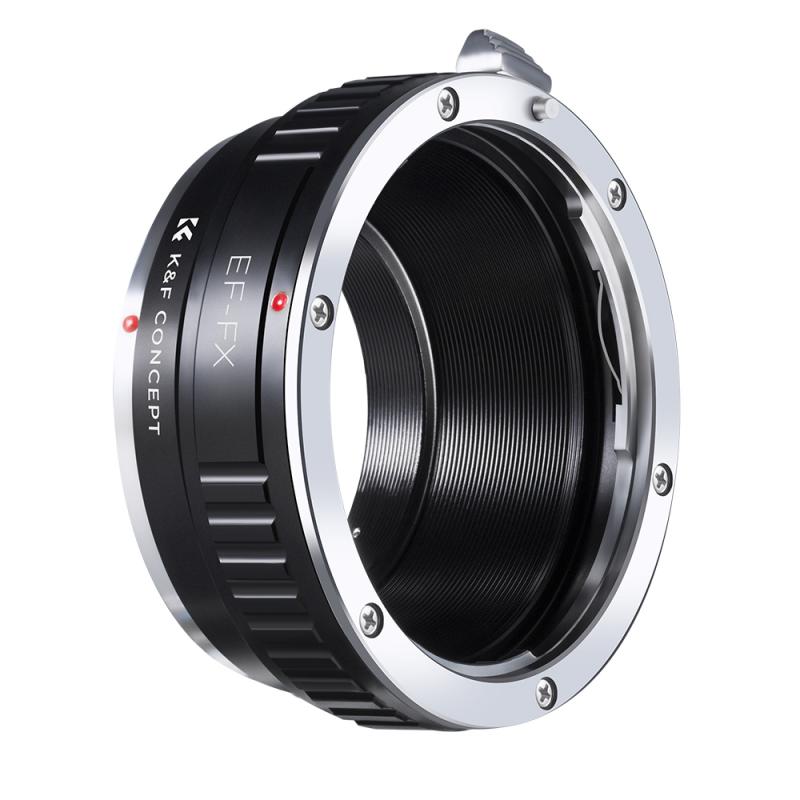
2、 Compatibility and Limitations of EF Mount to EFS Lens Conversion
Compatibility and Limitations of EF Mount to EFS Lens Conversion
Converting an EF mount lens to an EFS lens can be a useful option for photographers who want to use their EF lenses on cameras with APS-C sized sensors. However, it is important to understand the compatibility and limitations of this conversion before attempting it.
To convert an EF mount lens to an EFS lens, you will need to physically modify the lens by removing the rear element and adding a spacer to adjust the flange distance. This modification allows the lens to project an image circle that matches the smaller APS-C sensor size.
It is worth noting that not all EF lenses can be successfully converted to EFS lenses. Some lenses have rear elements that protrude too far into the lens barrel, making it impossible to remove them without damaging the lens. Additionally, some lenses may not have enough space inside the lens barrel to accommodate the necessary spacer.
Another limitation of converting EF lenses to EFS is that the modified lens will only be compatible with APS-C sensor cameras. If you plan to use the lens on a full-frame camera in the future, the conversion will render the lens unusable on such cameras.
Furthermore, it is important to consider the potential impact on image quality. The modification process may introduce additional optical aberrations or affect the lens's overall performance. It is recommended to thoroughly research and understand the potential consequences before attempting the conversion.
In conclusion, converting an EF mount lens to an EFS lens can be a viable option for photographers using APS-C sensor cameras. However, it is crucial to consider the compatibility and limitations of the specific lens being converted. It is advisable to consult with professionals or experienced individuals who have successfully performed the conversion before attempting it yourself.
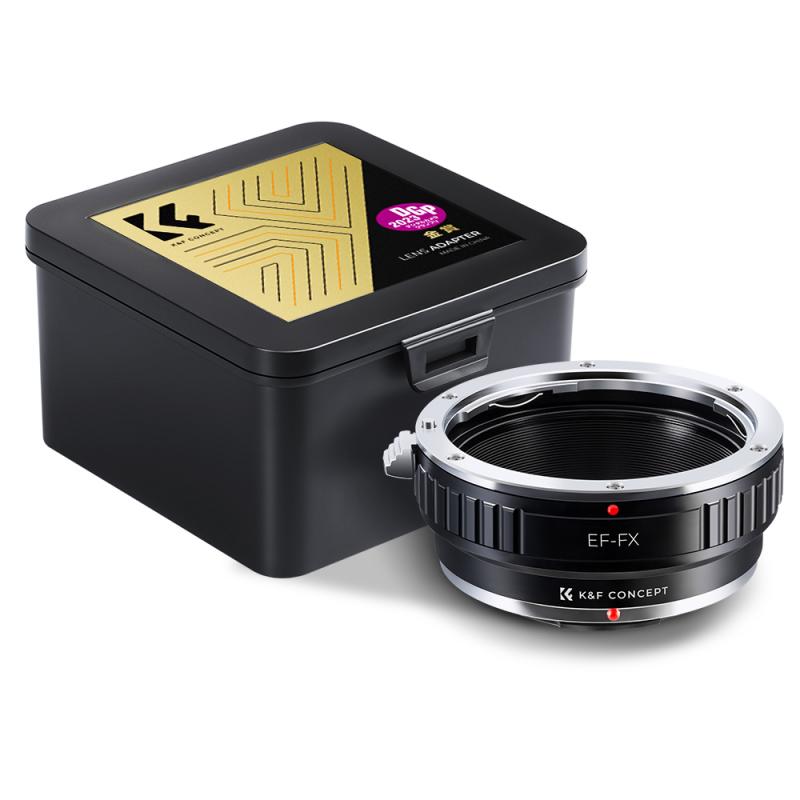
3、 Steps to Physically Mount an EF Lens on an EFS Camera
To physically mount an EF lens on an EFS camera, you will need an EF to EFS lens adapter. This adapter allows you to attach an EF lens to an EFS camera body, which typically has a smaller sensor size. Here are the steps to follow:
1. Purchase an EF to EFS lens adapter: Look for a reputable adapter that is compatible with your specific camera model. There are various options available from different manufacturers, so choose one that suits your needs and budget.
2. Remove the lens cap: Take off the lens cap from the EF lens you want to mount.
3. Align the lens and adapter: Line up the red dot on the lens with the corresponding dot on the adapter. This ensures proper alignment.
4. Attach the lens to the adapter: Twist the lens clockwise until it locks into place on the adapter. Make sure it is securely attached.
5. Mount the adapter on the camera: Align the adapter with the camera's lens mount and rotate it clockwise until it clicks into place. Ensure that it is firmly attached to the camera body.
6. Test the lens: Turn on the camera and check if the lens is functioning properly. Test the autofocus, image stabilization, and other features to ensure everything is working as expected.
It's important to note that using an EF lens on an EFS camera with an adapter may result in a crop factor, as the lens is designed for a larger sensor. This means that the effective focal length of the lens will be longer on the EFS camera. Additionally, some EF lenses may not be fully compatible with EFS cameras, so it's advisable to do thorough research or consult the lens and camera manufacturer for compatibility information.
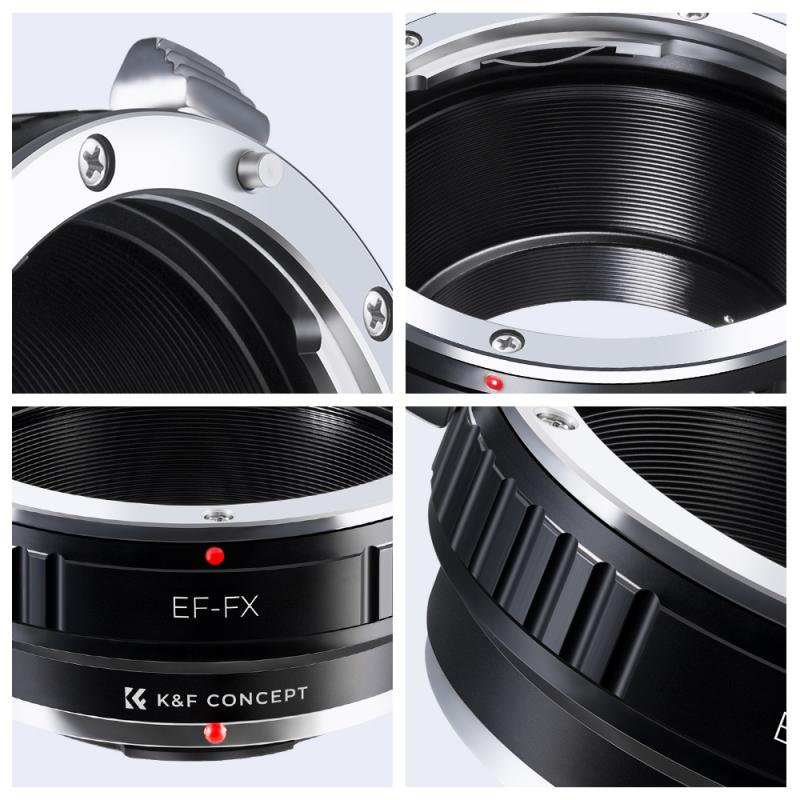
4、 Adjusting Camera Settings for EF Lens on EFS Camera
To adjust camera settings for an EF lens on an EFS camera, follow these steps:
1. Mount the EF lens onto the EFS camera body. Ensure that the lens is securely attached to the camera.
2. Turn on the camera and navigate to the settings menu. Look for the "Lens Aberration Correction" or "Lens Correction" option. This setting allows you to correct any lens-specific aberrations such as distortion or chromatic aberration.
3. Enable the lens correction option and select the appropriate lens model from the list. Some cameras may automatically detect the attached lens and apply the correct settings.
4. If your camera has an autofocus microadjustment feature, you can use it to fine-tune the autofocus accuracy for the EF lens. This is particularly useful if you notice any front or back focusing issues. Consult your camera's manual for instructions on how to access and use this feature.
5. Adjust the camera's metering mode and white balance settings as needed. These settings may vary depending on the shooting conditions and personal preference.
6. Familiarize yourself with the camera's crop factor. EFS cameras have a smaller sensor size compared to full-frame EF cameras, resulting in a crop factor. This means that the effective focal length of the lens will be multiplied by the crop factor. For example, a 50mm lens on a camera with a 1.6x crop factor will have an effective focal length of 80mm.
It's important to note that using an EF lens on an EFS camera may result in a slight decrease in image quality due to the lens being designed for a larger sensor. However, advancements in technology have minimized this difference, and many EF lenses perform exceptionally well on EFS cameras.
Always refer to your camera and lens manuals for specific instructions and recommendations.


